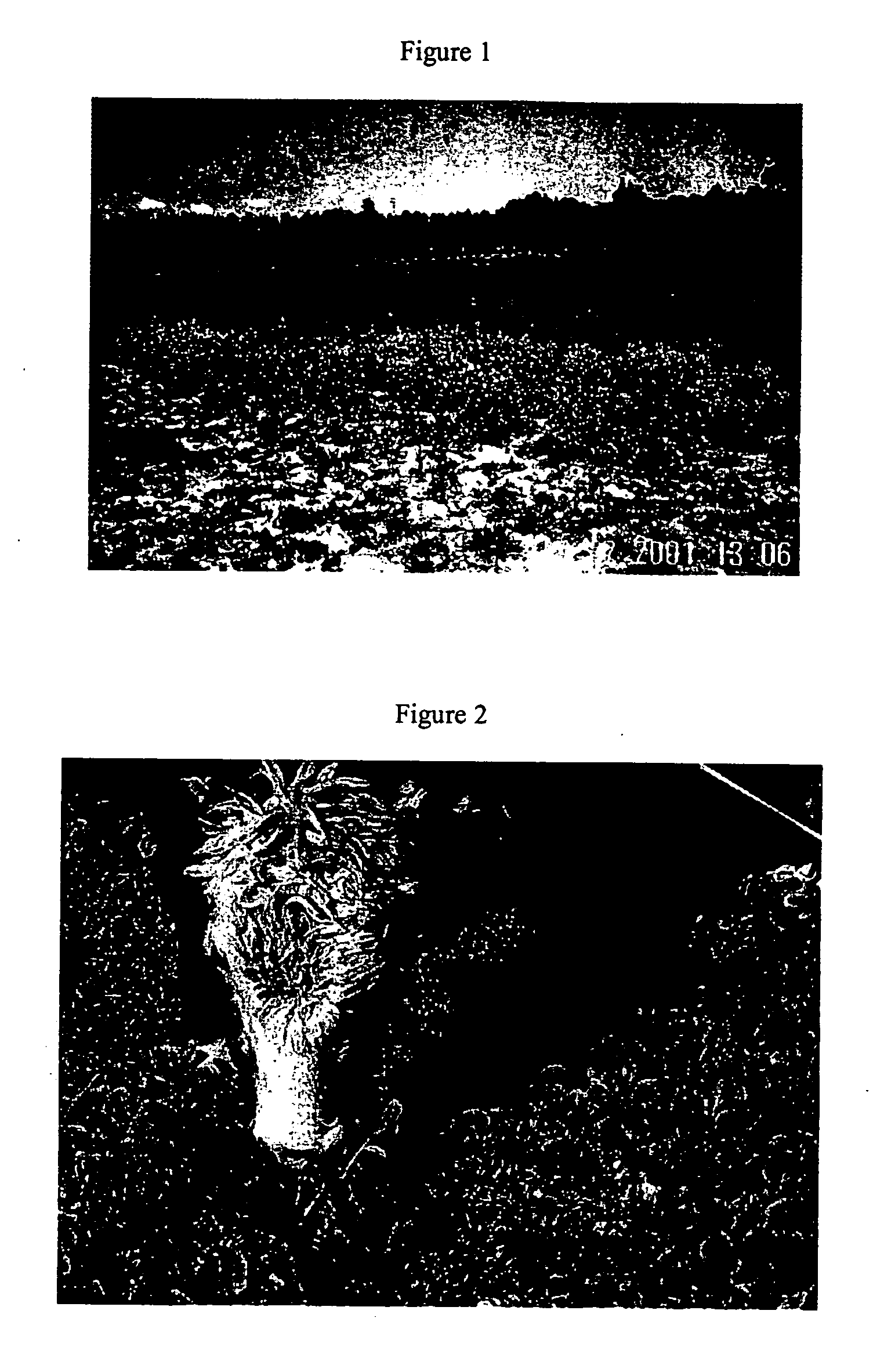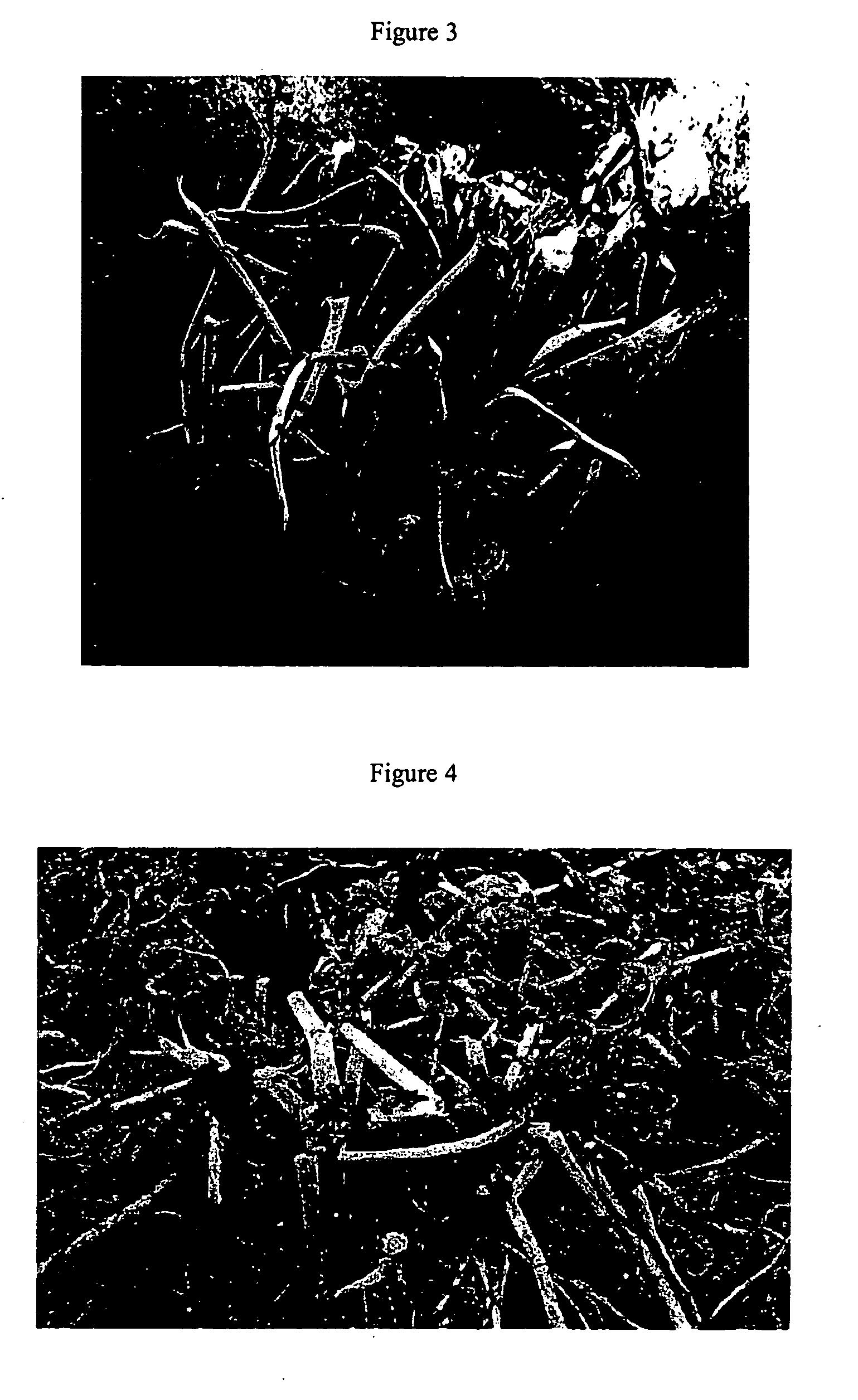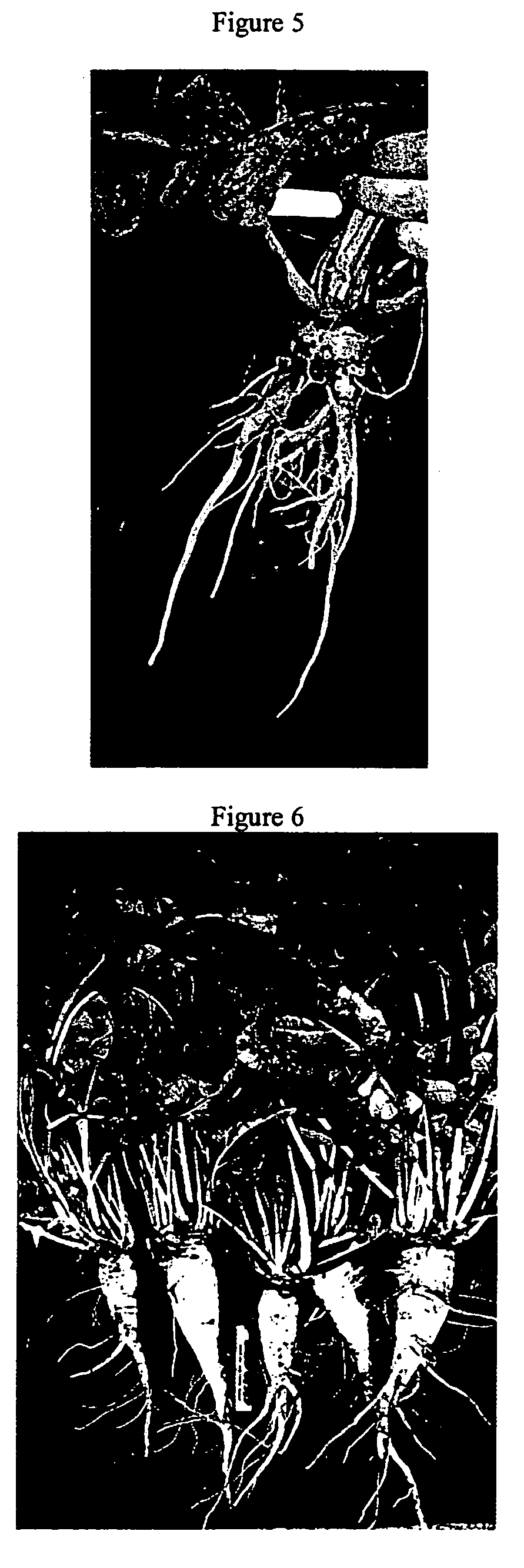Fodder radish
a technology of fodder radish and radish leaves, which is applied in the field of fodder radish, can solve the problems of limited grazing flexibility, limited grazing ability of cultivars, and insufficient recovery of cultivars used in grazing, and achieve the effect of better fodder radish plants
- Summary
- Abstract
- Description
- Claims
- Application Information
AI Technical Summary
Benefits of technology
Problems solved by technology
Method used
Image
Examples
Embodiment Construction
, given by way of example, but not intended to limit the invention to specific embodiments described, may be understood in conjunction with the accompanying Figures, incorporated herein by reference, in which:
FIG. 1 shows plants of the multiple graze radish in the second summer after sowing, showing the survival alongside winter forage cultivars of rape (Brassica napus) and leaf turnip (Brassica rapa), both of which had failed to survive into the second summer.
FIG. 2 shows a cow grazing multigraze forage radish.
FIG. 3 shows a clipped plant of multiple grazing radish showing the many stems developing from a large crown.
FIG. 4 shows a single crown of multigraze radish showing the multiple regrowth sites after five grazing cycles.
FIGS. 5 and 6 show roots of the multigraze radish showing the branched nature of the root and large crown with many emerging stems.
FIG. 7 shows a plant of multiple grazing radish showing the multiple stems developing from a large crown after five grazing ...
PUM
 Login to View More
Login to View More Abstract
Description
Claims
Application Information
 Login to View More
Login to View More - R&D
- Intellectual Property
- Life Sciences
- Materials
- Tech Scout
- Unparalleled Data Quality
- Higher Quality Content
- 60% Fewer Hallucinations
Browse by: Latest US Patents, China's latest patents, Technical Efficacy Thesaurus, Application Domain, Technology Topic, Popular Technical Reports.
© 2025 PatSnap. All rights reserved.Legal|Privacy policy|Modern Slavery Act Transparency Statement|Sitemap|About US| Contact US: help@patsnap.com



